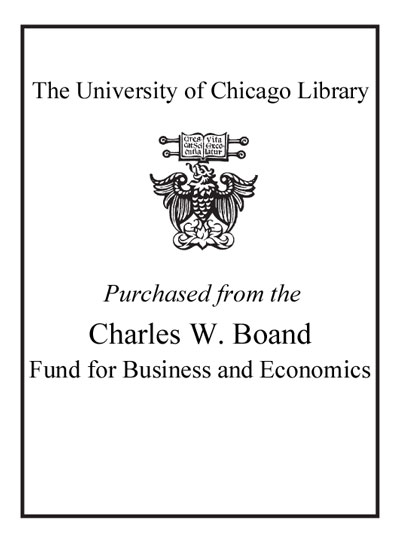Strategy and performance : achieving competitive advantage in the global market place /
Saved in:
| Imprint: | Basingstoke, Hamsphire ; New York : Palgrave Macmillan, 2004. |
|---|---|
| Description: | xiv, 316 p. : ill. ; 23 cm. |
| Language: | English |
| Subject: | |
| Format: | Print Book |
| URL for this record: | http://pi.lib.uchicago.edu/1001/cat/bib/5142685 |
Table of Contents:
- List of Tables and Figures
- Foreword
- Acknowledgements
- List of Contributors
- 1. Creating Value in the New Competitive Landscape
- Introduction
- Strategy: dealing with increasing complexity
- References
- Part I. Competing in the Global Marketplace
- 2. Developing and Managing Strategic Alliances, Building Social Capital and Creating Value
- Abstract
- Introduction
- Developing and managing strategic alliances as a critical managerial capability
- Alliance scope definition
- Partner selection
- Resource configuration, optimization and exploitation
- Social capital
- Value creation
- Conclusion
- References
- 3. Towards a Theory of Multinational Enterprises and the Civil Society
- Abstract
- Introduction
- The World Trade Organization: contrasting perspectives
- The civil society and globalization
- The political economy of civil society
- Towards a theory of MNEs and civil society
- Multinationals and civil society: managing external stakeholders
- Conclusion
- References
- Part II. Changing Industry Configuration
- 4. Building versus Acquiring Resources: Analysis and Application to Learning Theory
- Abstract
- Introduction
- Resource-based theory of economic rents
- Resource-based theory of competitive advantage
- Organizational learning theory
- Conclusion
- References
- 5. Better Constructs for Analysis and Management of Firm Competence
- Abstract
- Introduction
- Application of competence perspectives
- Empirical basis
- Observed character of competence
- Delineation of the competence construct
- Explanation of the rigidity problem
- Application of the conceptual scheme
- Conclusion
- References
- 6. Intangible Resources and Export Marketing Strategy as Determinants of Export Performance: An Empirical Analysis from the Resource-based View
- Abstract
- Introduction
- General theoretical framework: the resource-based view
- The model and hypotheses
- Research methodology
- Results
- Discussion
- Conclusion
- Notes
- References
- 7. Strategic Planning: The Key to Enhanced Performance?
- Abstract
- Introduction
- Operationalizing the strategic planning process
- Performance measurement
- Methodology
- Response
- Analysis
- Discussion
- The operating environment
- Conclusion
- Note
- References
- Part III. Organizational Change
- 8. Understanding the HR Strategies of the 1990s
- Abstract
- Introduction: were the 1990s a transformation decade?
- Shifts in strategic assumptions
- Downsizing/delayering (DS/DL) Model
- Work intensification for managers and professionals
- Teams as heroes
- Power-shifting
- Conclusions--the lessons of the 1990s
- Notes
- References
- 9. Managing in Times of Change: Avoiding Management Myopia
- Abstract
- Introduction
- Key questions
- Methodology
- Data analysis
- Findings
- References
- 10. Understanding Inertia: Developing a Multi-disciplinary Perspective?
- Abstract
- Introduction
- Ecological/institutional and industry organization economic (IO) theories of inertia
- Intra-organizational research on inertia
- Cognitive approaches to the explanation of inertia
- Discussion and conclusion: a multi-disciplinary approach to analyzing inertia?
- References
- Part IV. Managing Technological Change
- 11. A Dynamic Resource-based View of the Interaction between Technological Resources, Corporate Diversification and Performance
- Abstract
- Introduction
- Dynamic interaction between technological resources and corporate diversification
- Technological resources, corporate diversification, and performance
- Conclusion
- Notes
- References
- Part V. Innovation
- 12. Developing a Compass to Navigate the Innovation Journey
- Abstract
- Introduction
- Methodology
- The innovation compass
- Background to case studies
- Research findings
- Conclusion
- References
- 13. Leadership and Innovation: Surfacing Synergies among Constructs and Theories
- Abstract
- Introduction
- Theory of group innovation
- Measuring group innovation
- Climate for innovation
- Group innovation
- Leadership and innovation
- Integrating active and passive leadership styles
- Summary of research on leadership and innovation
- Methodology
- Group level agreement
- Results
- Discussion
- References
- Part VI. Conclusion
- 14. Strategic Management: Its Development and Future Directions
- Introduction
- The academic literature of strategy
- What are the critical academic ideas and influences in strategy research?
- Future research in strategic management
- References
- Index

